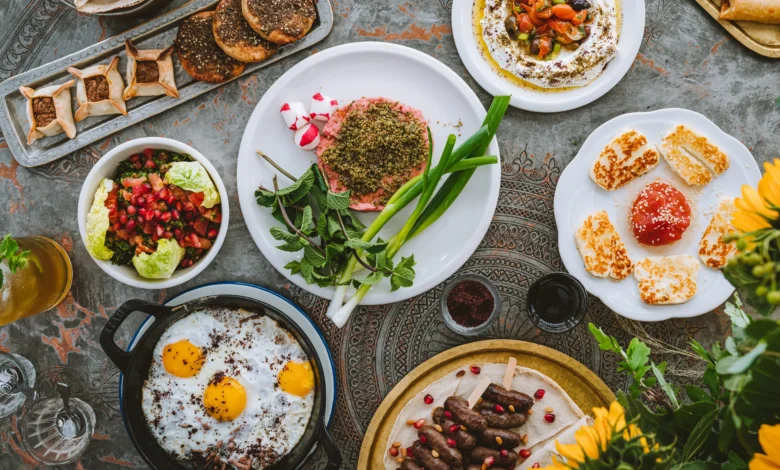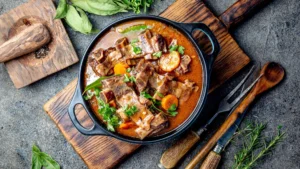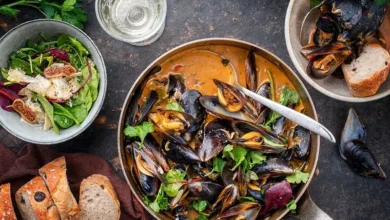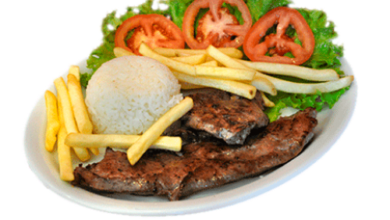TOP 10 dishes: what to try in Paris – French cuisine

A skillful combination of ingredients, spices, herbs, fascinating aromas, wonderful wines and cheeses – this is France. The cuisine is another attraction of the country. French dishes are loved by gourmets all over the world.
A French meal begins with appetizers (hors d’oeuvre), followed by soup, then a main course, salad and cheese. The meal ends with dessert or fruit.
Onion soup
The French created a real masterpiece from ordinary onions, beef broth and bread crusts, which became one of the calling cards of the country.
Cooks often add butter, garlic and grated cheese to the dish, which add a special taste and aroma. And the best addition to hot soup is crispy croutons. The onion cooks slowly and becomes golden brown.
The soup is prepared in small individual portions and served to guests in the same container in which it was prepared. Onion soup is now offered by most restaurants in Paris.
Quiche
Quiche is a French open-faced pie with a base of shortcrust (sometimes puff pastry) dough, a variety of fillings (for example, chicken, broccoli and cheese, salmon and broccoli) and a filling of eggs and cream.
Quiche can be served either cold or hot; you can take it with you as a cold snack to work or give it to your child at school.
Poached egg
Poached egg (œuf poché) – boiling an egg without a shell in hot water with the exact cooking time and not allowing the water to boil. A popular snack in French cafes and bars since 1910.

To prepare a croque monsieur, you use toasted crumbly bread, ham and cheese (Emmental or Gruyère).
Interestingly, the prefix “croque” means “crispy”, and “madame” and “monsieur” respectively refer to a man and a woman.
Croissant – famous French pastry
From French, croissant translates as “crescent” – its shape resembles a moon cone. According to the French, it should only be eaten fresh.
Classic French croissants are prepared without any fillings – tender, soft inside, golden and crispy on the outside. The croissant is eaten with the hands. Where to try delicious croissants in Paris.
On Place Saint-Germain in Paris, Les Deux Maggots’ is a café that opened in 1885 and still retains its original interior (leather sofas and mahogany tables). Parisian bohemia gathers here. The price for croissants is 3.50 €.
Café de Flore, a café on the corner of Boulevard Saint-Germain, opened in Paris in 1887. There is a special romantic atmosphere here; Simone de Beauvoir, Ernest Hemingway, and Pablo Picasso frequented the café. The cost of croissants is 2.70 €.
Boulangerie in Paris: Maison Landmine, Pacifica Boulangerie, Du Pain et Des Ides, Boulangerie Louvard, Arnaud Demonte, Gwen Choc.
Regular croissants in Paris can be bought on every corner, but for an unusual baguette or a delicious dessert, it is better to go to one of the best bakeries in Paris.
French baguette
French baguette (une baguette) is a symbol of France, a bakery product, soft inside, with a crispy crust. A standard baguette has a length of approximately 65 cm, a width of 5-6 cm and a height of 3-4 cm.
A special variety of chestnuts grows here, called kugurdon. Traditionally, the French prepare soups, salads, desserts from chestnuts, and also simply eat the fruits roasted over charcoal. The most famous venue for the chestnut festival in France is the Isola ski resort and the French village of Marju.
Glazed (candied) chestnuts are a popular Christmas treat in France. This is an expensive and rare product. And these are the most famous confectioneries in Paris for gourmets: Jacques Genie Maison, Bossier, Patrick Roger, Pierre Herma, La Maison du Chocolate, Pierre Marcelina, Jean-Paul Hyvin, A La Mere de Faille, Headyard, Faulcon, etc.
Beaujolais Nouveau
Beaujolais nouveau (Beaujolais nouveau – new Beaujolais) is a variety of young French wine produced from Gamay grapes in the historical region of France Beaujolais (Burgundy). According to French law, fresh harvest wine is officially presented on the third Thursday of November (in 2020 this day falls on November 19); this day is often called the “Feast of Beaujolais”.

The wine has a bright, sharp taste with an impatient fruity bouquet. Light, lively, with a bright character, highlighting the tones of currant, cherry and raspberry and emphasizing the brilliant and transparent red color of the drink. Beaujolais Nouveau is recommended to be consumed chilled to 13 °C; cold cuts and cheeses are usually offered as an appetizer. Beaujolais Nouveau is usually consumed until March of the year following the harvest at most.
Cutlet de volley
Cutlet de volaille (côtelette de volaille) is a dish very similar to “Cutlet Kiev”. A classic French recipe: pounded chicken breast is stuffed with a creamy sauce, coated several times with a mixture of egg and breadcrumbs, then fried or baked in the oven. A variety of ingredients can be added to a creamy sauce, which can significantly change the taste of the dish as a whole.
In 1918, cutlets de volai were first served at one of the official receptions in Kyiv. Everyone liked the new dish and quickly entered the restaurant menu, receiving the name “Kiev cutlet.” Later, during mass production, its recipe was simplified – cold butter was used instead of sauce.
Ratatouille
Ratatouille is a traditional Provencal vegetable dish made from peppers, eggplants and zucchini. Baking time – no more than an hour.
Gratin dauphinois
Gratin dauphinois is a potato casserole with cream. The dish was first mentioned in 1788. The recipe initially included potatoes, garlic and butter, with cream and additional ingredients added later. The potatoes are cut into slices, laid in layers and cooked in the oven over low heat for about an hour. You can also add cheese and eggs. The highlight of the dish is the aroma of garlic.


